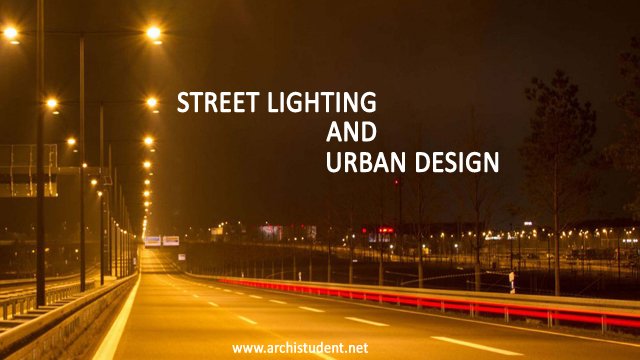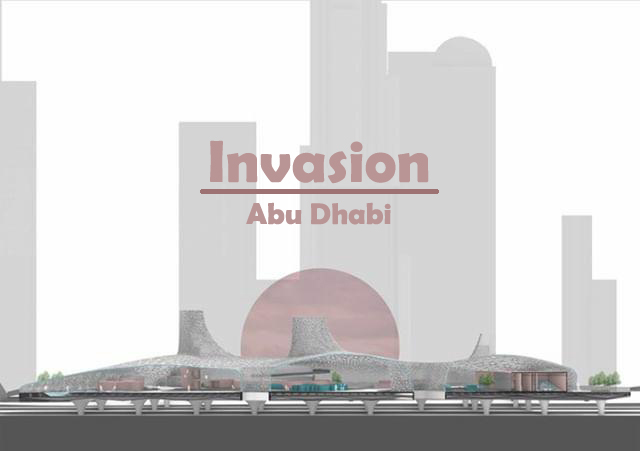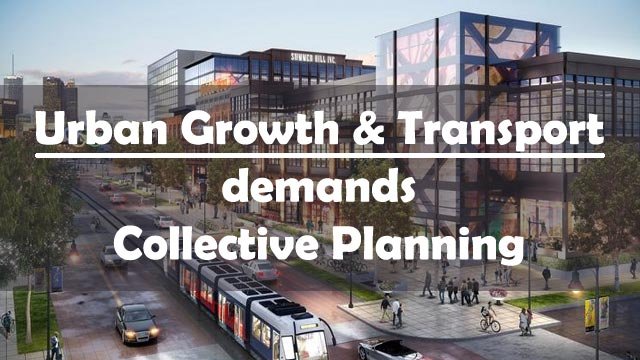
Street Lighting and Urban Design
Street lighting Poles and fittings make a major impact on the appearance of the road scheme/urban design and should be planned as part of the overall design concept from the initial stage. It is especially important that in old historic towns and conservation areas, particular attention should be paid to the aesthetic quality of the street lighting design and installation moreover at the same time equal care should be taken to avoid light pollution, particularly in rural areas.

Importance of Street Lighting –
In any area street lighting has an important role to play in:-
- Reducing risks of night time accidents;
- Discouraging crime;
- Assistance in the protection of buildings/property;
- Making secure environment for habitation;
- Discouraging vandalism;
- Enhancing the appearance and urban design of the area especially in dark.

Arrangement of lights in a commercial street describing the character of the street
Important points to remember before Implementation –
Lighting arrangements may be used to identify the functions of different roads and create an urban design effect. For example, two light poles at the entrance to a road can be used to create a gateway effect to any area. Sizing of trees and shrubs when mature and their location in any layout plan must be considered in relation to location of street light poles.
[one_half]Adequate lighting should be provided in all parts of the area/layout to enhance safety and security for drivers, cyclists and pedestrians as well. Lighting is also necessary to illuminate bottle necks, bends and traffic calming features, to enable road users to see the potential obstacles and each other in the night to reduce the fear of crime.[/one_half][one_half_last]Street lighting must be planned as an integral part of the initial layout of access and shared surface roads, driveways, walkways and in conjunction with the location and anticipated growth of trees/shrubs. The uniqueness of lighting provided should confirm that shadows are avoided in places where pedestrians/cyclists would otherwise be vulnerable.[/one_half_last]

Lighting poles, wall mount brackets, solar batteries and other fittings need to be resistant to vandalism and be placed in positions which minimize the risk of damage by vehicles. These poles should be aligned with the other street furniture to enhance the urban-ism and located to ensure the clear walkways and other circulation areas.
Street Lighting on Buildings –

In narrow streets especially in old cities areas, mounting light on building can provide a means of ensuring appropriate lighting levels without incorporating additional designs and street furniture at surface level. These provide an impact of better aesthetics and proposer usage of less available space. In such cases maintenance and access issues can arise which can be resolved with better planning at the initial stages.
Height of Lighting Poles –
In designing lighting within streets, consideration should be given to the type of lighting that is efficient in the context of the street. It is often the case that lighting in streets is essentially suitable for highway lighting but is not entirely in context with the street character/environment. Key issues in the provision of lighting are scale, colour and luminance which are as described below:
- Scale : As said above, mostly the street lighting is actually provided for highway/expressway purposes. An outcome of this is that it is often located at such a height unsuitable to the cross section of the street and out of scale to the pedestrian/cyclists. Urban Design consideration should be taken in street design for the purpose of pure lighting, the scale of lighting relative to users of the street and the messages/signals sent to the drivers by lighting design.

Picture showing efficient use of lighting w.r.t height, color and luminance to enhance the urban design with Combination of Street lights and pedestrian lamp posts - Colour : The colour of lighting is another important consideration. Where pedestrians are concerned like in small streets, white light is preferable, rather than yellow or orange. White lighting allows better judgement of street features/elements, including the facial expressions of the street users, which can be an important component in revive personal security concerns.
- Luminance : An acceptable level of street lighting is 5 lux as per the Bureau of Indian Standards, although it is recommended that at locations where people gather, for example bus stops, meeting spaces (in rural areas), 10 lux is appropriate. In providing better urban design and inclusive streetscape, the flow of lighting levels is very important, with sudden changes in lighting level being extremely problematic for partially sighted humans/people. The shading effect of trees/shrubs should also be considered in determining the species, its location and management.
- Other Lighting Consideration : In some contexts, lighting can contribute to the actual sense of place of a street/road with both active and passive (reflective) lighting features blurring the difference between functional and aesthetic contribution to the streetscape. These initiatives are often based around community projects and are practiced in various locations of Gujarat, India. A prominent example of this approach has been demonstrated by Government of Gujarat, India as part of their Green Highway and Boulevard project which has focused on green vision, street/highway quality and its management.
Types of Street Lights –
There are mainly six types of street lights available which can be used at various locations in conjunction with Urban Design of the area and other factors of street lighting. The types of street lights are as follows:
1. Metal Halide Street Lights :
Metal halide lamps/bulbs are mainly used in streetlights, parking lot lights, and stadium lights. They are very bright in color and contribute to a lot of light pollution. They are fairly efficient. They produce very white light and have good color performance/rendering, meaning that objects under these lights look their true color.’

2. High Pressure Sodium (HPS) Street Lights :
The high pressure sodium lamp (HPS) is the most commonly used street light in many countries throughout the world. It produces bright light by electricity via mixture of gases, which produces light. The lamp itself is much preferable because it requires very little/less maintenance. These lamps are fairly efficient. They take few minutes to turn on completely and produce a yellow-orange kind of glow.

3. Low Pressure Sodium (LPS) Street Lights :
The low pressure sodium (LPS) lamp also works like the HPS light. Instead of producing pure white light (all the seven colors of the rainbow), LPS lamps produce exclusively yellow/warm yellow light. While this light is very efficient, it takes few minutes for the bulb to turn on completely. The light is very yellow-orange in color.
4. Light Emitting Diode (LED) Street Lights :

LED technologies have developed rapidly in the last 5-6 years and now these bulbs are also being integrated into outdoor lighting solutions. While the energy savings are significant, LEDs emits a lot of blue/white blue light, excess of which can have negative effects on human health and wildlife. In combination with solar panels these lights can drastically minimize the demand of electricity requirements.
5. Phosphor-Converted Amber (PCA) LED Street Lights :
PCA LEDs have only been on the market for the past 2-3 years. They use very less energy and have good color representation, but are still rather expensive. Few Indian cities like Bombay have already installed these lights on their streets.
6. Narrow-Band Amber (NBA) LED Street Lights :
Narrow-Band Amber (NBA) LED Street lights are a brand new technology. Rather than emitting pure white light (all the seven colors of the rainbow) and blue light, they emit mostly in the yellow/ warm yellow color. They still have good color representation, meaning that they do not make objects look grey like LPS lamps can do. Because this technology is very much new, these bulbs are not commonly available and as such, and are still expensive. Overall they are very efficient.

Conclusion
The suggestions specified/described in the article on street lights: urban design, trees/shrubs, lighting colour, luminance, scale and types of street lights, when applied over time, these design suggestions will enhance the appearance, health and enjoyment of the urban street and its surroundings.





